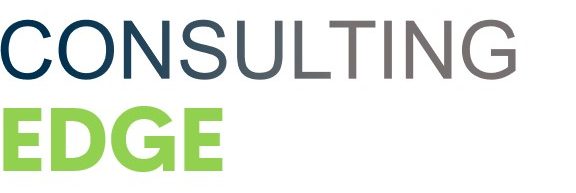The success of a meeting depends on the preparation and planning put into it. A checklist for what needs to be done before, during, and after. It can make all the difference in how successful your next planning meeting is.
The checklist should be easy to follow and include the plan, preparation needed for your meeting, what needs to happen during the meeting including who is responsible for certain tasks and how they can best help you get through them.
Lastly, it should outline what needs to happen afterward which includes delegating any additional work needed or putting together a post mortem of lessons learned.
Here, this blog post will provide you with key elements and tips for Planning Meeting that includes key elements for a successful meeting.
Purpose of the Planning Meeting?
The purpose of the Planning Meeting is to plan and organize what needs to happen before, during, and after a particular project. The 1st step is to set clear goals and objectives.
The next step is to organize the necessary resources needed for your meeting, including human as well as tangible ones which can be a budget or time allocation. After this, it’s about organizing who needs to do what by when.
Finally, you need to determine the post-meeting plan which involves delegating any additional work needed or putting together a post mortem of lessons learned.
Meetings are an integral part of business life and they can either increase productivity or leave your team feeling overwhelmed with too much work on their plate. The more organized you are before your Planning Meeting, the easier it will be during and after!
Key elements of a Planning Meeting?
Here are the key elements for successful meeting planning in order to have productive meetings. So that it don’t take up too much time but yield results instead.
Vision, Goals & Objectives:
It is important to understand what is your meeting goals and objectives before you start. This way everyone can work together towards the same goal, be on the same page. When it comes to how they should contribute, know whether or not their contributions are helping move things forward instead of getting in the way, etc.
The main purpose of the Planning Meeting is to plan and organize what needs to happen before, during, and after a particular project. So it’s necessary for meeting participants to have clear goals & objectives in mind so they can focus on how best to achieve them within the time allocated.
You should have a clear vision, goals, and objectives before the start of your meeting to have productive meetings. This way everyone can work together towards the same goal, be on the same page. When it comes to how they should contribute, know whether or not their contributions are helping move things forward instead of getting in the way, etc.
Resources:
Another key element for successful planning meetings are resources, both human as well as tangible ones which could be budget or time allocation. Everyone involved should know who will do what by when.
On top of that, every team member should also know their roles in addition to allocating tasks among teammates. This means everybody knows exactly where they fit into this project. It is also crucial for everyone to be aware of what resources are available so they can plan accordingly.
Resources can include budget allocation & time/effort from employees being allocated towards the project. It may also include any other things that may help it succeed such as third-party vendors or equipment needed for certain tasks etc.
Critical Success Factors:
As well as knowing what resources are available, it’s important to identify the critical success factors for your meeting. This basically means understanding how you can measure each project against its goals and objectives in order to determine whether or not it was a success overall.
Each team member needs to know their role & tasks that need completing. So they can effectively plan how they will contribute towards meeting the project’s goals and objectives. It is also crucial for everyone to be aware of what resources are available so they can plan accordingly with this information in mind.
This way you will be able to determine what success means for your project, whether it’s meeting deadlines or achieving certain milestones. It is necessary to know the critical success factors of a particular project. So you can measure each task against its goals and objectives in order to determine if it was successful overall.
Key Performance Indicators:
The last key element for successful planning meetings is Key Performance Indicators (KPIs). This is basically a way to measure each task against its goals and objectives in order to determine whether or not it was ultimately successful.
If you want your Planning Meeting to be effective, make sure everyone involved knows what the KPIs will be beforehand. So they can work towards achieving them while upholding their roles & responsibilities throughout the project’s lifecycle.
It is crucial that everyone understands KPIs before starting on this project. The team members need to know how best they can contribute by working together. You have to keep in mind these factors of the process until the completion of the project.
Key Issues:
Another way to make sure your Planning Meeting goes as smoothly as possible is by identifying key issues before it even begins. You need to know what the problems are. So everyone can work together during this meeting in order to resolve them and achieve success overall.
At a minimum, you should be aware of major obstacles such as time constraints or lack of resources that may arise throughout each project’s lifecycle. These things can cause big roadblocks which will affect whether or not everything was successful at the end of the day.
It would also help if you were aware of any additional challenges that could pop up along with their potential solutions beforehand too. So they don’t come out randomly when it’s too late, causing trouble for everyone involved. Especially those who had no idea this was going to happen.
Tips for Planning Meeting:
Every aspect should be planned out carefully beforehand to ensure maximum efficiency and zero issues during the meeting itself.
Use the agenda to keep you on track. Create an agenda beforehand, and stick with it. Take notes during your meeting. This will help everyone stay on task, remember key details, and make sure nothing gets missed or forgotten!
The best thing about using a checklist is that there’s room for everything to get checked off in one place. Make sure you write down the action items at the end of every meeting. So people can self-manage their own tasks after they leave.
This way meetings don’t become less productive because someone didn’t clearly understand what was expected of them next time around.
Key Takeaways:
The last step for having an effective planning meeting is writing down all these must-have elements. So they can succeed, before starting on anything else. This should include creating action plans that detail who’s responsible for doing each task; resources needed etc.
The most important thing about this process is making sure everyone understands their role & responsibilities. This includes writing down the key issues that can arise throughout each project’s lifecycle which you need to prepare for beforehand.






